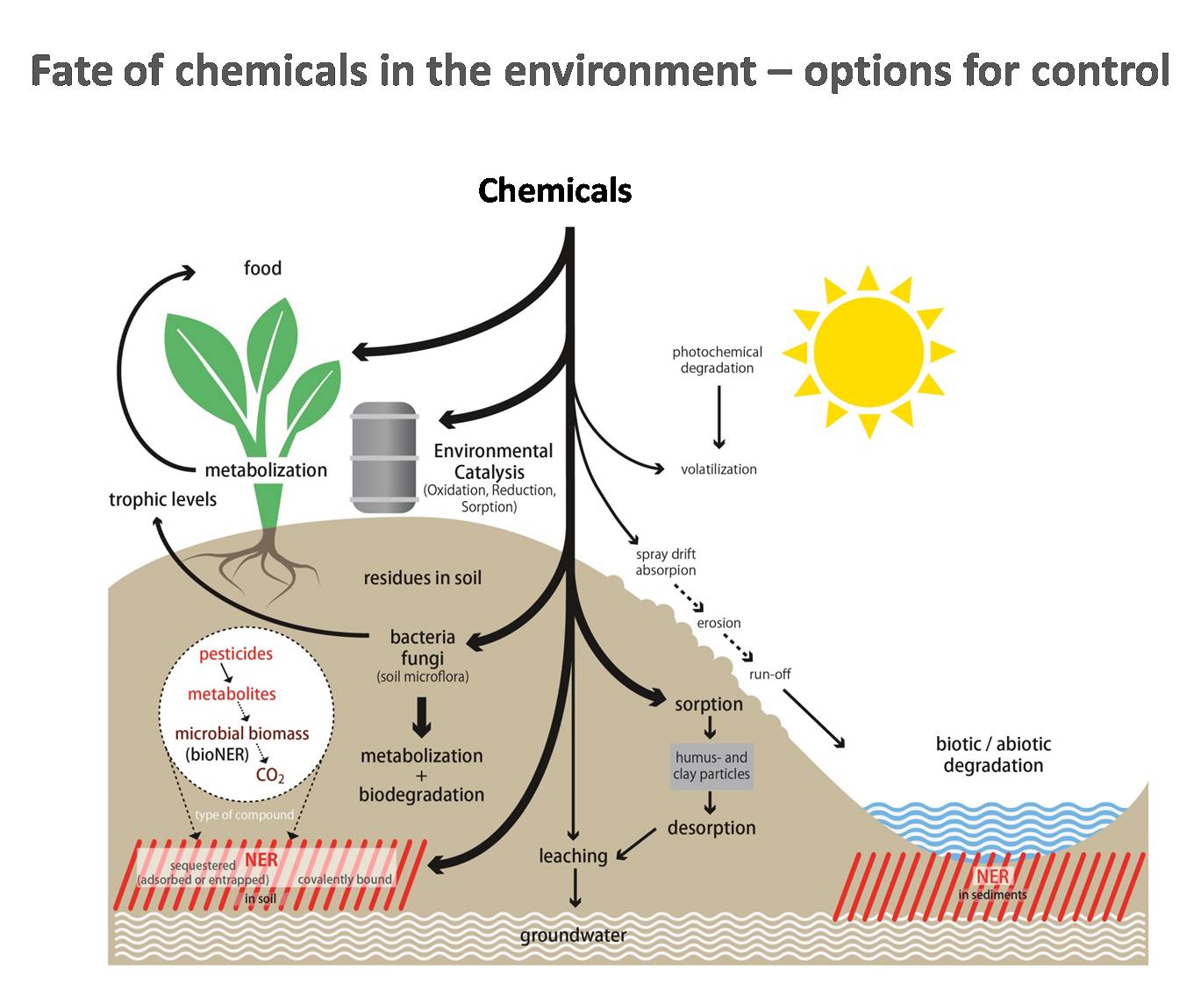Work Package 3: Management & Intervention Options
WP 3 aims at developing intervention options to control the input of chemicals into the environment and their fate from the molecule to the natural and engineered ecosystem level, including: molecular interactions (environmental catalysis), the cellular level (biochemical and physiological capabilities), and the ecosystem level on which effective intervention options will be identified and customised for contaminated environments.
In close collaboration with WP 1 and WP 2, the work carried out in WP 3 is devoted to physical and chemical technologies as well as biotechnology for contaminant removal from soil, water and off-gas flows. For water treatment, catalytic boost of reduction and oxidation processes will be a main focus. The radio-wave technology was developed as a universal tool for heating up solid materials, including dry and tenacious soils. Constructed wetlands (CWs) are employed as model ecosystems for the ecological treatment of waters either contaminated with chemicals or potential pathogenic organisms, i. e. for the tertiary treatment of waste water. Emphasis is laid on engineered reactors (for chemical catalysis) as well as on near-natural treatment systems.
However, a lack of appropriate and reliable in situ tools for chemicals' treatment became obvious. A promising example is the development of Carbo-IronTM, a carbon-iron composite material for in situ reduction of halogenated pollutants in contaminated aquifers. Comparable long-living oxidants are missing so far. Other promising approaches are the aid of antibiotic and biological reduction processes by electrodes or eletrosorption for the improved removal of microorganisms and chemicals.
WP 3 will also aid in developing guidelines for environmental risk assessment and management of chemicals in the environment, e.g., for risk assessment of pesticides forming various types of non-extractable residues (biogenic and xenobiotic NER) posing highly different environmental and health hazards.
Model of WP 3

Contact
Prof. Dr. Frank-Dieter Kopinke
Head of the Department of Environmental Engineering
Prof. Dr. habil. Matthias Kästner
Head of the Department of Environmental Biotechnology
